Energy indeed is needed to get us through the day, yet sometimes we lack energy, and we feel tired after a busy days work. Know! Why one feels energy deficit, and how to boost your energy with yoga.
In the yogic system, the inner energy or vitality is called Prana which analogous to Chi in the Chinese system of knowledge.
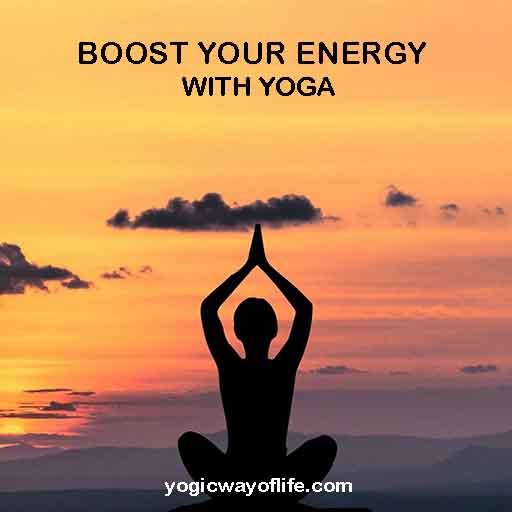
What is Prana Shakti or Energy?
We are not just a physical body! Just as in our physical body, blood flows through veins, capillaries, and arteries, likewise, in our energy body, prana flows through energy pathways called nadis.
Everything in and around us is Prana or energy. Life force or power or pranic energy is the substratum and essence of all life, which makes life possible on the material level. Moreover, Prana is the link which connects mind, consciousness, intellect, and material world together. Hence, we can call prana a connecting link. Not only this, but also prana balances our physical functions like breath, oxygen supply in the body, digestion and so on.
Often, we notice that few people have a harmonious vibration, which is because they possess good prana. On the other hand, someone who has blocked prana, will be ill or negative in behavior and similarly his vibrations will be “disturbing”. Therefore, People who develop the ability to control Prana, gain harmony and health of both body and mind eventually.
Why is free flow of Prana essential?
Free flow of prana is essential for the healthy body and mind. Only if, there is a balanced flow of energy or prana, harmony on physical and emotional level is possible. Free flow of prana enhances vitality and strength, cure diseases, foster potentiality and productivity, and helps one to evolve to a higher state of awareness.
On the contrary when pranic energy is blocked it creates disharmony on both physical and emotional level which in turn gives rise to several issues like depression, negativity, anxiety, fear, etc.
How to boost energy naturally?
‘Yoga’ is the fastest way to unblock the vital life force and boost energy in a natural and subtle way. Besides, it is a conscious attempt to connect with the soul, transforming oneself into a more pranic being. It not only allows prana to flow through the energy pathways freely, but also rejuvenates one by creating harmony in body and mind. In the Upanishads, it is said:
तां योगमिति मन्यन्ते स्थिरामिन्द्रीयधारणाम् !! (कठोपनिषत् 2-6-11)
Tam yogamiti manyante sthiramindriyadharanam!!(Kathopanisad-2-6-11)
Meaning: Yoga is an art to align senses and mind in one direction, the state in which all our senses (indriyas) are beheld steadily.
Yoga not only boosts energy, but also balances one emotionally, physically, cognitively, intellectually and spiritually.
3 Steps to Boost Your Energy:
- Yoga Asanas
- Pranayam
- Meditation
I. YOGA ASANAS TO BOOST YOUR ENERGY
Surya Namaskara or Sun Salutation
Begin your asana practice with Surya Namashkara, as it also warms up the body and prepares you for further asana practices.
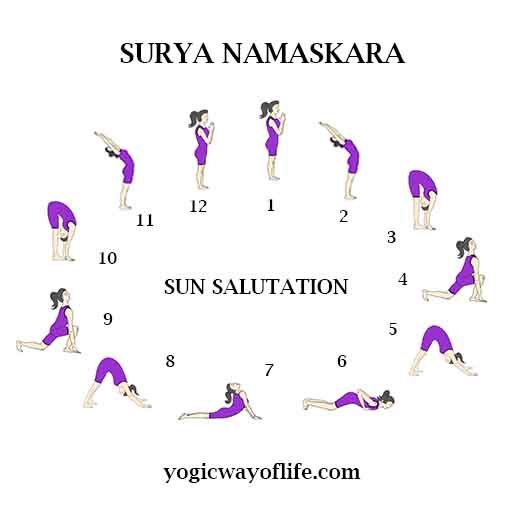
It includes 12 steps sequence or rhythmic movements which are synced with the breath. Two such rounds make one cycle. It is one of the most popular and wide-spread asana sequence in Yoga. Undeniably, Surya Namaskara has motley of benefits, as it is a complete body Vyayam or exercise. It not only benefits the body, but also increases the energy circulation in our body by releasing the stress, instilling peace and stillness, stimulating chakras, increasing awareness and so on and so forth.
Do 5 – 10 rounds.
Chakrasana or The Wheel Pose
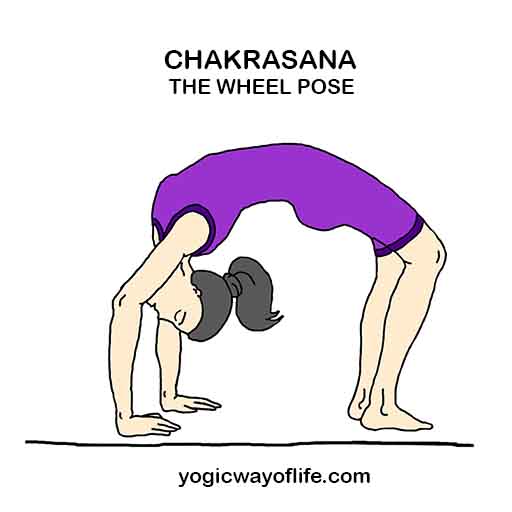
Chakrasana gives psychological, emotional and spiritual benefits. Moreover, it also increases patience, perseverance, and discipline in one, besides, giving a boost in energy levels. It also relieves one of stress, anxiety and depression.
Virbhadrasana or Warrior Pose
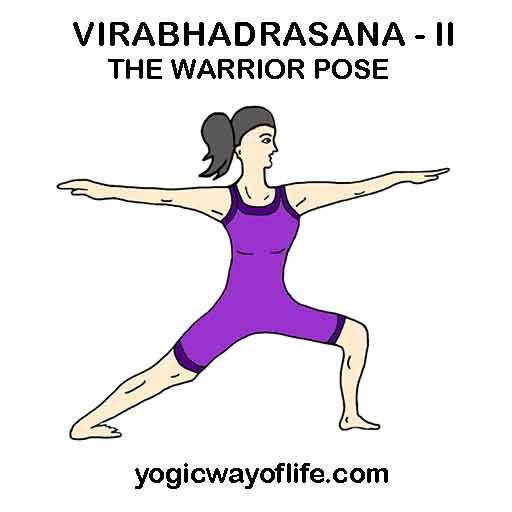
Veer is a Sanskrit word which means valorous, warrior; whereas Bhadra stands for auspicious; Veer Bhadra pose is named after Virabhadra, a fierce warrior, an incarnation of Lord Shiva. Chiefly, this pose strengthens and tones the arms, legs and lower back along with helping to improve stamina and to boost your energy. Furthermore, it does bring courage, grace, peace and stability.
Bhujangasana or Cobra Pose
Bhujangasana is an easy pose. Lie down on your belly with chin touching the ground. While hands are placed close to the shoulders with palms touching the ground; keeping legs straight. Press your palms firmly against the floor. As you inhale, lift up your trunk, using your palms as support, while belly button touching the ground, and the gaze towards the ceiling. Keeping your hips steady, remain in this position for 15-20 seconds and then release.
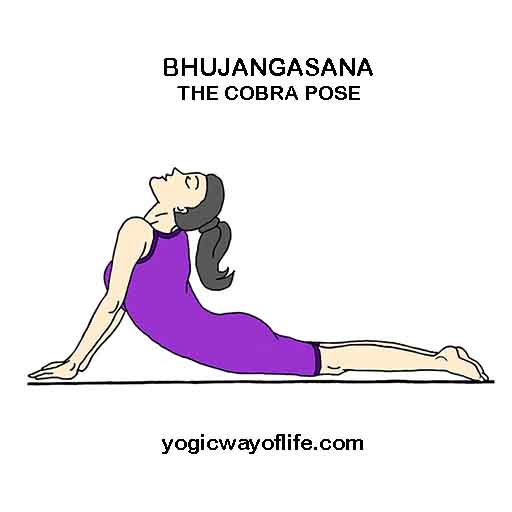
Bhujangasana is a great stretch for the front body. In addition, it increases pranic force which is good to boost your energy.
Sarvangasana or Shoulder Stand Pose
Lie down in shavasana. As you inhale, contract the abdomen and slowly raise both the legs to a 90 degree angle from the floor. Support your waist and the hips with the palms and slowly raise the back and the legs up into a vertical position. Make sure the chin rest against the chest. Fix your sight on the toes and breathe normally.
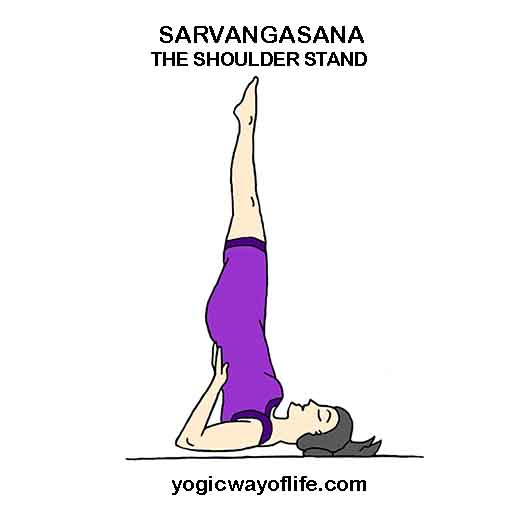
Sarvangasana is considered to be one of the best and most important asanas in Hatha Yoga. This asana has multiple benefits covering overall body system. Besides, having positive effects on the body, Sarvangasana helps in harmonizing the pranic flow and boosts energy.
Sirsasana or Headstand Pose
Kneel on the floor. Interlock your fingers and place your forearms on the floor. Also, keep your elbows shoulder-width apart. Rest the crown against the clasped hands. Inhale; lift the knees off the floor. Further, come into inverted ‘V’ position. Gradually, lift your feet off the floor and bring your knees closer to your chest. Gently straighten your legs and keep them perpendicular to the ground. Finally, stay in the pose for 15-20 seconds, keeping your weight evenly balanced on the two forearms.
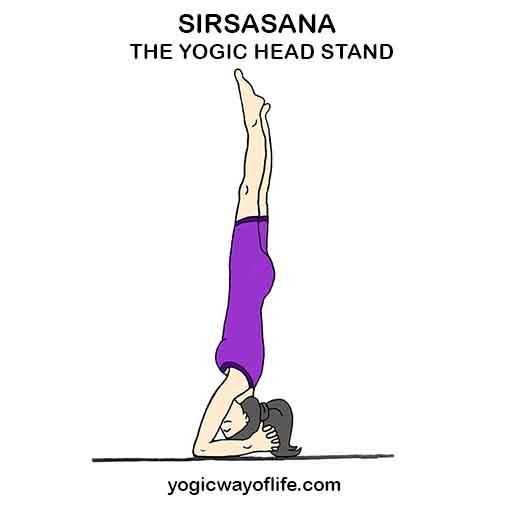
The practice of Sirsasana not only increases the blood supply in the brain, but also strengthens muscles, increases flexibility of spine and boost your energy and stamina. Besides, it improves the overall health of the person.
Shavasana or Corpse Pose
Asanas should be concluded with Shava Asana. One needs to lie down, freeing his/her body. This pose is predominantly meant to sink in all the yoga asanas at a deeper level. Shavasana brings a deep, meditative state of rest, which helps in repair of tissues and cells, and releases any stress. This pose relaxes the body and calms the mind and is a perfect pose to conclude the yoga session.
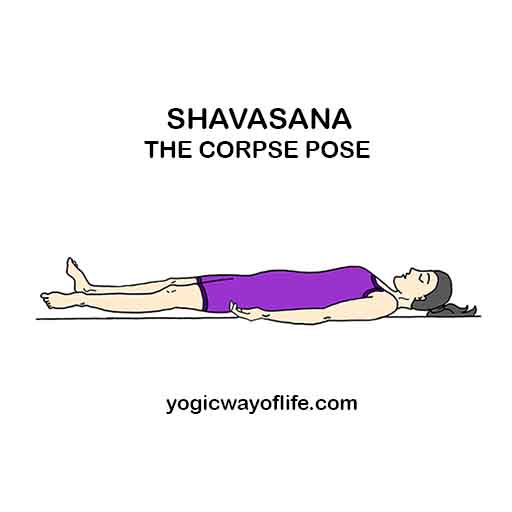
Time: 5 – 10 minutes.
II. PRANAYAMA TO BOOST YOUR ENERGY
Prāṇāyāma is an art of conscious breathing, it comprises two Sanskrit words: prana which means “life force or breath,” and ayama “techniques of intentionally altering the breath to produce specific results.” It is the fourth limb of the Ashtanga yoga.
तस्मिन् सति श्वासप्रश्वास्योर्गतिविच्छेदः प्राणायामः (Patanjali Yoga Sutra 2.49)
tasmin sati śvāsa-praśvāsyor-gati-vicchedaḥ prāṇāyāmaḥ (Patanjali Yoga Sutra 2.49)
Meaning: Siting in your favorable posture and consciously controlling the speed of inhalation and exhalation is Praanaayaama.
Pranayama is an excellent breathing exercise for overall health. It helps you release any kind of anxiety and strengthens your energy positively. Pranayama is a great way of energizing the body and mind simultaneously.
PRANAYAMA SERIES
Bhastrika Pranayama
It involves forceful inhalation and exhalation of breath. This pranayama technique increases the level of oxygen in the blood. As a result, improving the healing process in the body.
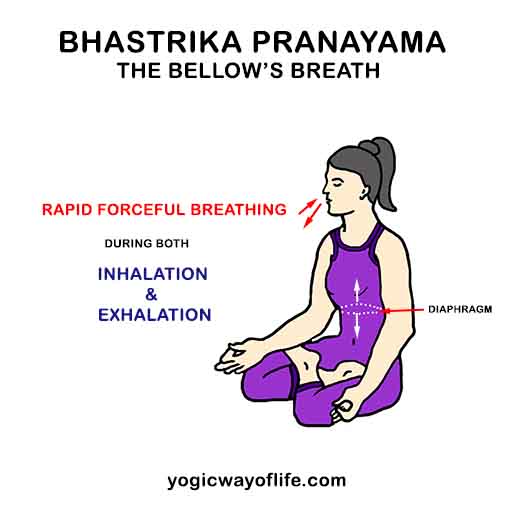
Kapalbhati Pranayama
Kapalabhati is a great way to detoxify the body, as the technique helps in expelling carbon dioxide from the blood. Thus, helping to heal the body faster.
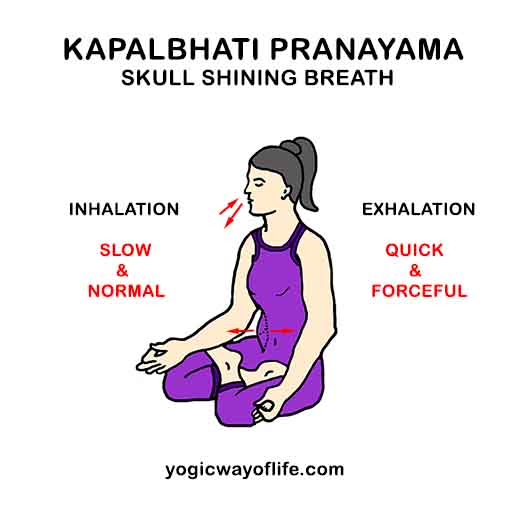
Anulom Vilom Pranayama
Also called alternate nostril breathing exercise. It is a simple breathing exercise, known to balance the Tridoshas (three doshas) in the body namely Vata, Pitta and Kapha. . Specifically, it helps to balance the activities of the two hemispheres of the brain. Thus, Anulom Vilom is probably the easiest and the most effective way to stay healthy and have a calm mind.
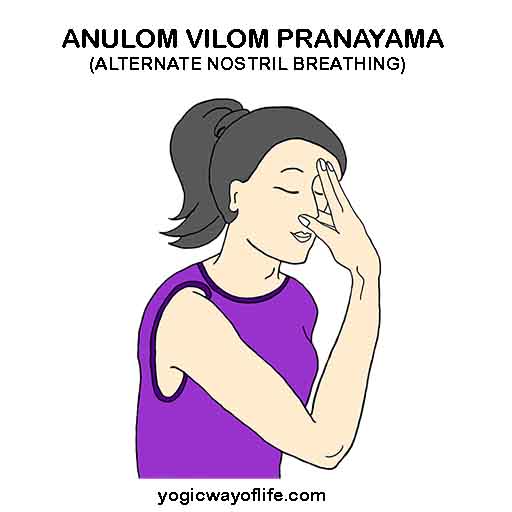
Bhramari Pranayama
Commonly known as bee breathing exercise. It involves humming like a bee, with ears covered with the forefingers and thumbs. Bhramari pranayama calms the nerves and soothes them, especially around the brain and forehead.
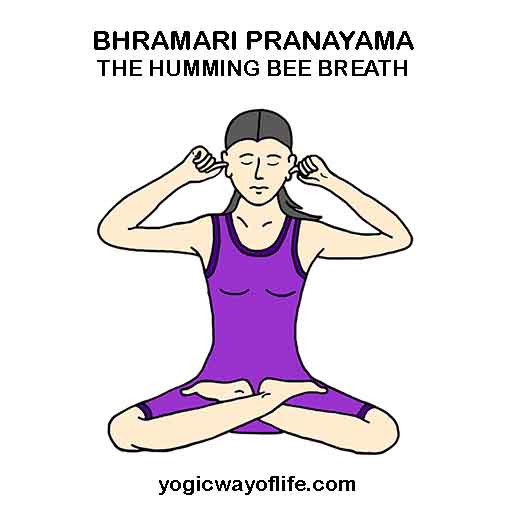
Ujjayi Pranayama
Also called the psychic breath. It is done by constricting the throat and inhaling with hissing sound. This technique helps to improve the health of the thyroid. Besides, it clears toxins from the body.
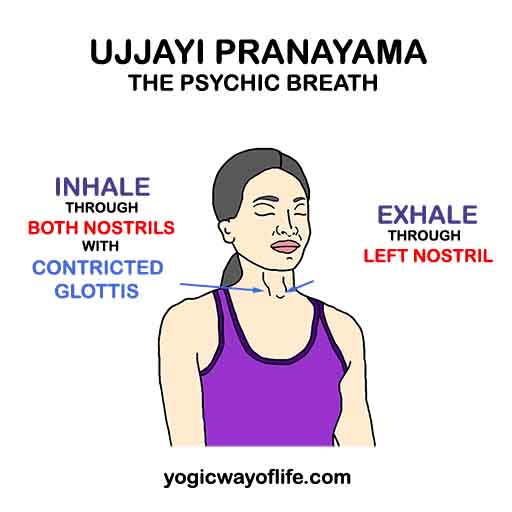
Udgeet Pranayama
It involves chanting of OM (AUM) with every exhalation, lasting up to 20 seconds.This improves focus and concentration, besides creating a sense of relaxation.
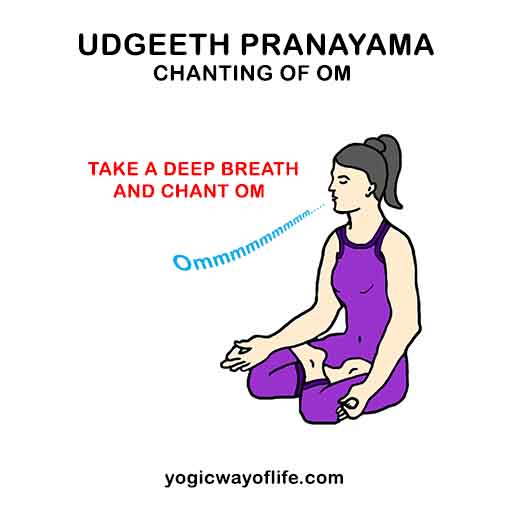
Dirgha Pranayama
Also called the Three-Part Breath. This is a calming, grounding, and physiologically profound practice that subsequently calms the nervous system and the mind.
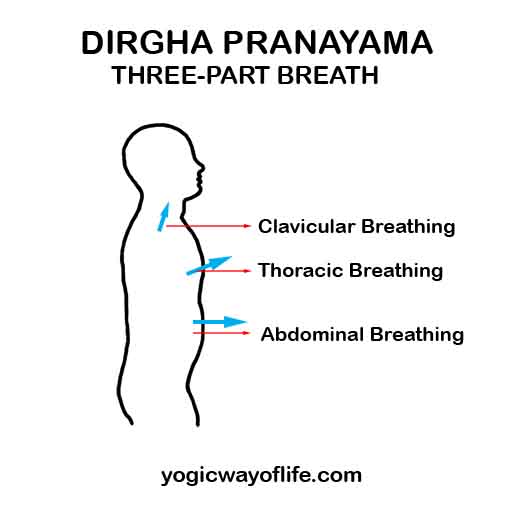
Sheetali Pranayama
This technique is also known as Cooling Breath Technique. It is an easy, yet effective way to cool the body and tranquilize the mind. Besides, it expels toxins from the body.
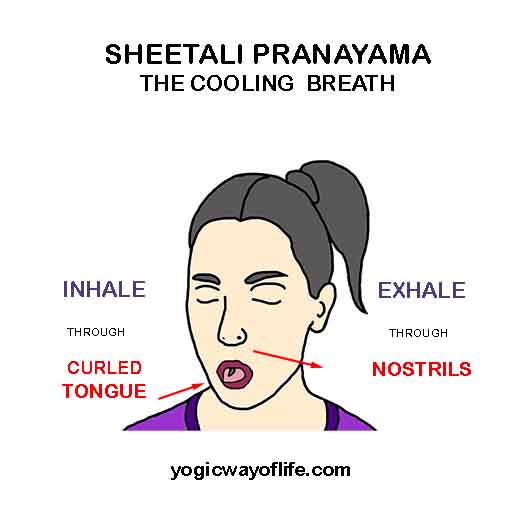
III. MEDITATION
Lastly, meditation is the most common practice which is used to calm down the mind and retain the energy. There are various techniques used for meditation – such as mindfulness, or focusing mind on a particular object, or thought or on an activity like one’s breath, etc. Also, one can practice any technique of meditation in order to train attention and awareness, to achieve calm and stable state of mind.
To conclude…..
Thus, the regular practice of the three steps mentioned above can eventually help you to boost your energy or the Prana Shakti. Keep practicing “The Three Steps” to stay healthy, active, fit, and energetic….

Thank you very much, dear brothers for presenting us such a treasure.
Congratulations to Yoga Way of Life’s team. Fantastic presentation!
Namastê!
you stated the kundalini yoga and raising kundalini in perfect manner and i feel it really being working to me, i am far to my guru but my guru blessings making me for well preparation Thanks gurooji
i am yoga practioner and it boosts all beginners…. ome namah sivaya
Nice article